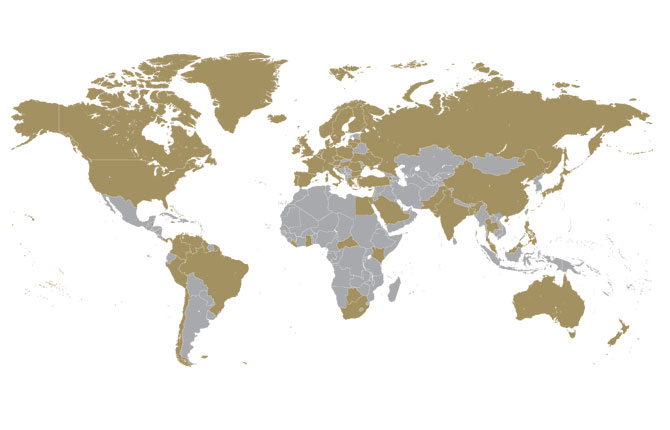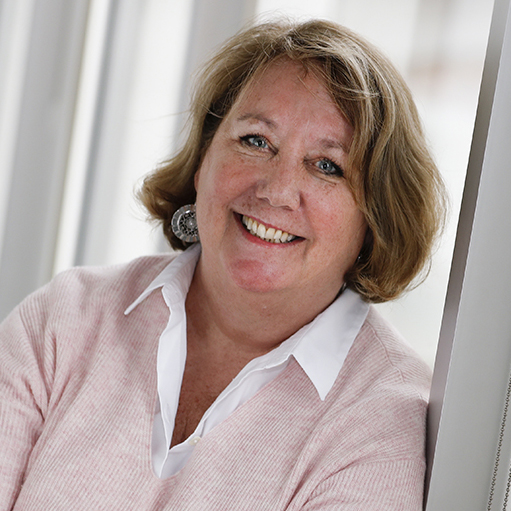The Voice of Worldwide Aviation
Representing general aviation around the globe

IAOPAs are represented in areas that are gold.
The March 1962 issue of The Pilot (now known as AOPA Pilot) announces the formation of the International Council of Aircraft Owner and Pilot Associations (IAOPA). The article on the new group is just pages from the magazine's editorial on the threat of "User Charges." It's been 50 years, but some things never change.
You’ll find updates on the threat of user fees in this March 2012 issue. And IAOPA—that new 15-member organization formed 50 years ago—has grown to 68 affiliates, representing more than 470,000 pilots and aircraft owners worldwide.
Did its founders foresee a global economy where general aviation would benefit from healthy relationships with other countries? They must have. In its mission statement, IAOPA says it formed “for peaceful purposes, in order to develop friendship and understanding among the peoples of the world.”
Serving GA
“IAOPA is the voice of worldwide aviation, promoting and protecting this vital form of transportation and recreation,” said IAOPA Secretary General John Sheehan. “The organization also provides a rallying point for general aviation interests, enabling them to share ideas and develop policies that will enhance the movement and promote growth.”
AOPA-U.S. and other general aviation interests expanded internationally in the 1950s as aircraft capability improved and general aviation pilots stretched their wings. Under the leadership of AOPA-U.S. President J.B. “Doc” Hartranft, board member Alfred Wolf, and Vice President of Publications Max Karant, the association quickly became aware that the work of the International Civil Aviation Organization (ICAO) was biased in favor of the world’s airlines. Airspace, customs facilities, airports, and rules of the air often neglected and sometimes ignored general aviation.
AOPA-U.S. became a member of the U.S. delegation to ICAO when general aviation interests were on the agenda. The AOPA representatives compared notes with other ICAO delegates sympathetic to general aviation interests, and other countries began forming their own associations. By the late 1950s, AOPAs were formed in Canada, Australia, South Africa, and New Zealand.
Hartranft, Wolf, and Karant proposed an “association of associations” that would represent general aviation in world aeronautical councils, principally ICAO. The object was to gain “observer status” within ICAO, which would allow AOPAs to enter discussions with member States that had voting privileges at meetings (countries are referred to as “States” in ICAO). In 1962, IAOPA members included AOPA.-U.S., AOPA-Australia, AOPA-South Africa, the Philippines Airmen’s Organization, Canadian Owners and Pilots Association, ILA Germany, APPA Mexico, OAPA Italy, and FVA Venezuela. ICAO recognition of the new organization followed in May 1964, providing its coveted observer status.
Work around the world
The fledgling association grew rapidly as general aviation interests around the world realized its importance and benefited from its work. In its first three years, IAOPA petitioned for adequate general aviation facilities at international airports; the establishment of regular working hours for immigration, customs, and agriculture clearance personnel; VFR weather minimums; IFR and VFR regulations operating in VMC; and advisory air-to-ground communications.
The first IAOPA World Assembly was held in London in 1966 with representatives from 16 States participating in the landmark meeting. The assemblies are held at two-year intervals and gather delegates from all affiliate organizations. Delegates discuss the current state of worldwide general aviation and develop resolutions that IAOPA uses to take action to protect and promote general aviation around the world.
Those who travel internationally in general aviation aircraft realize the benefits of IAOPA’s influence: pilot licensing requirements; aircraft registration and equipment requirements; airspace standardization; security provisions; and air traffic control procedures all contain positive evidence of IAOPA’s work.
“I never cease to admire the resolve of individual AOPAs in their efforts to improve and protect general aviation in their areas of interest,” said Sheehan. “I recently visited Chile, where their several forms of GA are very active. Although recent fee increases, airport closures and restrictions, and increasingly restrictive regulations slowed their growth, they have found a means of increasing GA’s influence. AOPA-Chile, flying clubs, flight schools, helicopter, and glider operations have joined together to form a coalition of interests to develop a united force to improve their lot within this lovely South American country.”
According to Sheehan, AOPAs in Europe are the most active. There are 30 individual European AOPAs, but general aviation flying in Europe has come under the scrutiny of two pan-European regulatory organizations—The European Organisation for the Safety of Air Navigation, also known as Eurocontrol, and the European Aviation Safety Agency—which have markedly increased oversight and regulation of aviation, especially GA. “These restrictions have materially affected the ability to operate freely and at reasonable prices,” Sheehan said. “IAOPA-Europe has aggressively pursued these restrictive issues and the efforts over the past decade have begun to yield successes. They have a long way to go, but they are making progress.”
AOPA-China was revived in the past year. GA there is in its early stages of development, with little tradition of private aviation on which to build. “They face many obstacles,” said Sheehan. “Watching them in action at their recent GA summit was both inspiring and impressive. They have a great future ahead.”
Challenges
“The most important issues challenging general aviation have changed little since the organization of IAOPA,” said Sheehan. These include:
- Access to airports and airspace
- Excessive operational costs and fees
- Freedom of navigation
- Expanding commercial and military aviation interests
- Congestion
- Excluding VFR operations
- Increasing amounts of regulation
- The price of oil
- GA airports under threat from developers
In the more than 65 years since the formation of ICAO, IAOPA has been the only organization that has continuously represented worldwide GA interests. Additionally, the five IAOPA regions of the world work with civil aviation regional groups and national authorities to provide the best possible environment for GA in their part of the globe.
“IAOPA concentrates on eliminating or mitigating the obstacles to a healthy GA presence worldwide,” said Sheehan. “Our presence in ICAO and regional organizations provides the first line of defense—and then an informed membership carries the fight to individual States, regions, and localities. Our job is a constant effort to make general aviation available and attractive to the populations—to ensure GA’s viability for future generations.”
Email the author at [email protected].
John J. Sheehan to retire
 After more than 15 years as secretary general to the International Council of Aircraft Owner and Pilot Associations (IAOPA), John J. Sheehan will retire in April. He is the fourth secretary general of IAOPA in its 50 years. Sheehan has participated in more than 25 International Civil Aviation Organization (ICAO) panels, meetings, and conferences on subjects that include safety, flight operations, security, personnel licensing, economics, and air traffic management.
After more than 15 years as secretary general to the International Council of Aircraft Owner and Pilot Associations (IAOPA), John J. Sheehan will retire in April. He is the fourth secretary general of IAOPA in its 50 years. Sheehan has participated in more than 25 International Civil Aviation Organization (ICAO) panels, meetings, and conferences on subjects that include safety, flight operations, security, personnel licensing, economics, and air traffic management.
Sheehan, an ATP, will enjoy retirement with his family in Wilmington, North Carolina.



